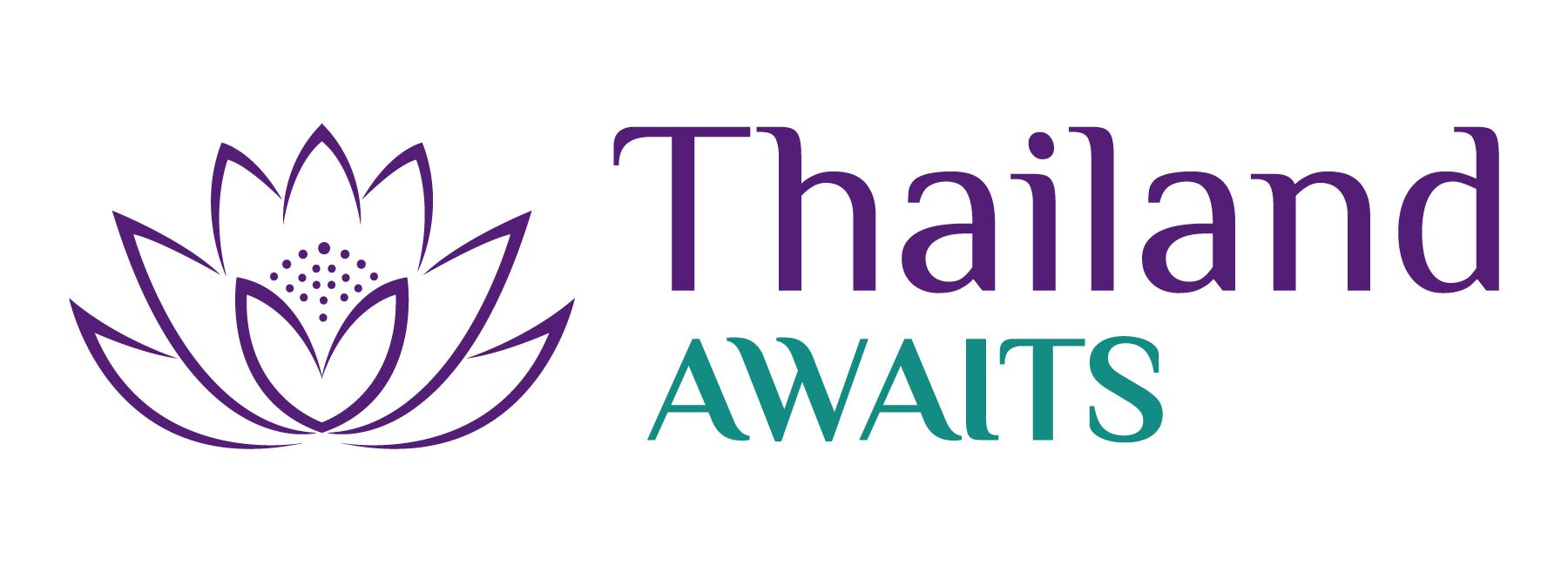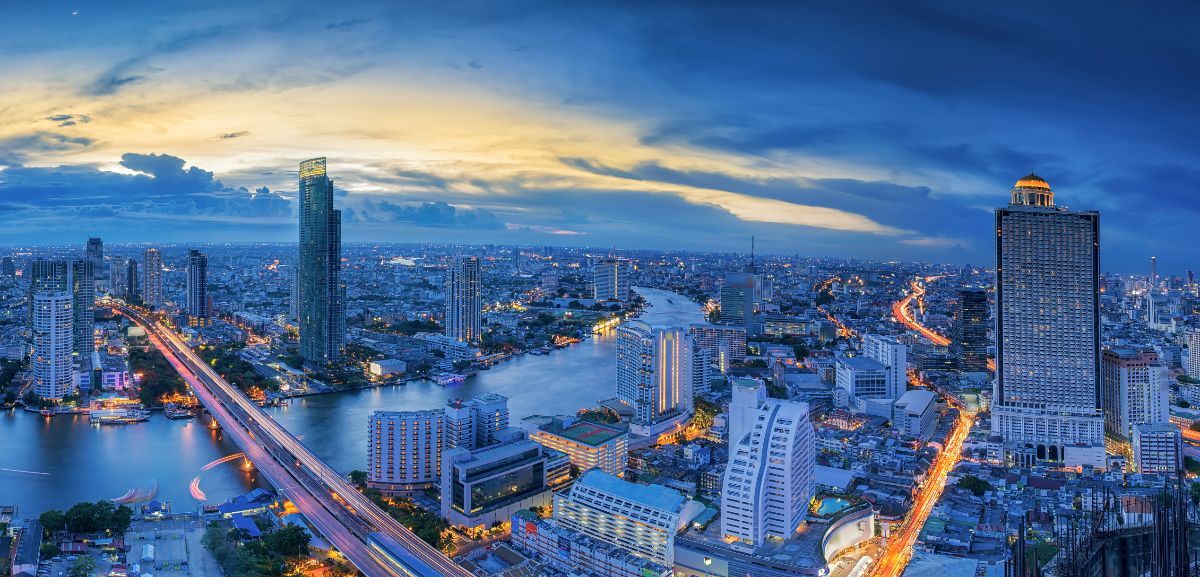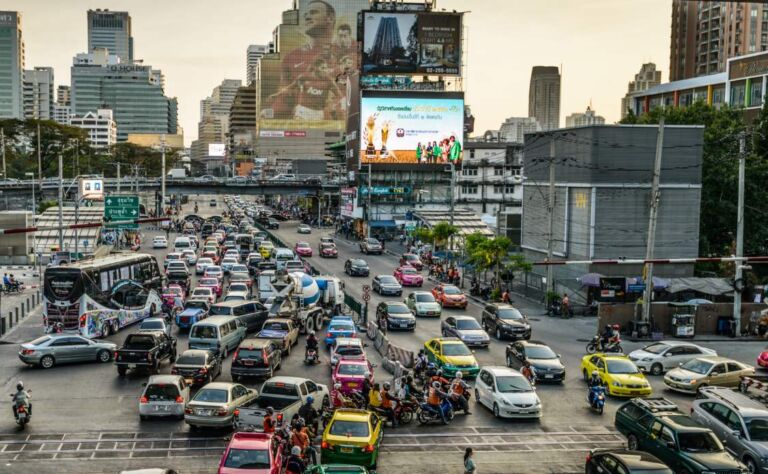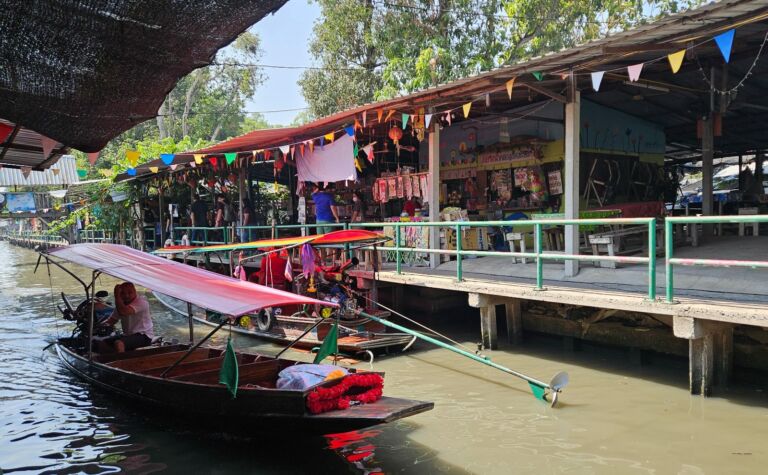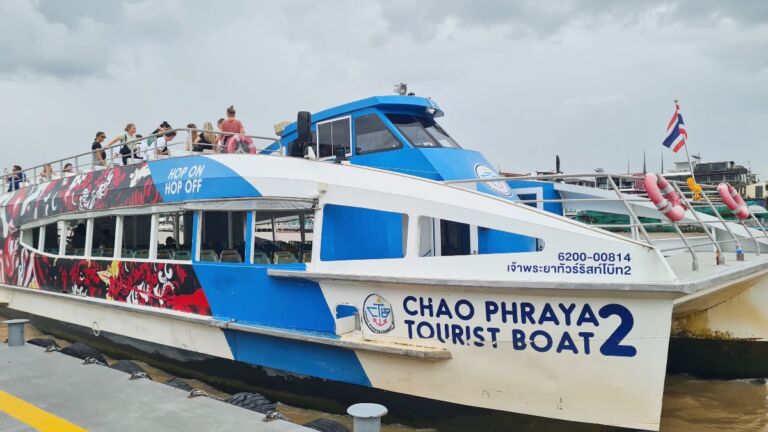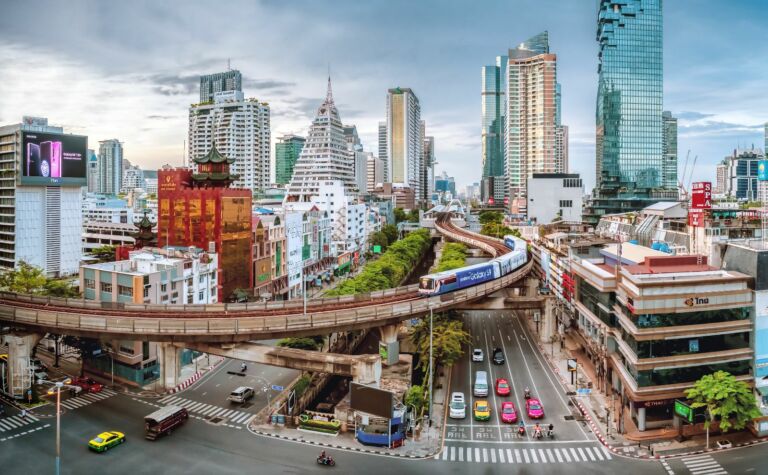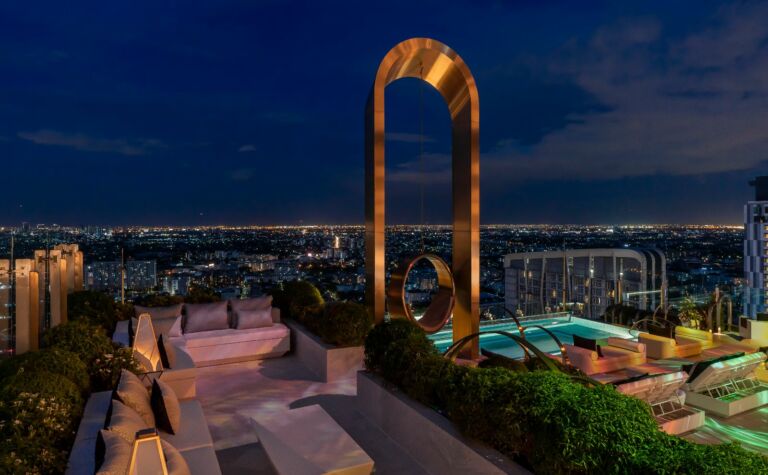Bangkok Travel Guide
Bangkok isn’t a city you fall in love with at first sight. It’s noisy, hot, and messy — but give it a couple of days and you’ll start to see the magic. This is a place where you can eat at 4am, shop until midnight, and still stumble across a quiet temple tucked behind a side street.
Yes, the Grand Palace and the famous temples are here, but so are neighbourhood markets, old shophouses, and some surprisingly calm corners where you can catch your breath. The trick is to mix the big sights with the smaller discoveries.
This page contains affiliate links. Please see our disclosure policy for more details.
About Bangkok
Home to nearly eleven million people, Bangkok sits on the Chao Phraya River, about 40km from the Gulf of Thailand. It’s been the capital since 1782 and is still very much the heart of the country.
The official name of Thailand is Krung Thep Maha Nakhon
Thailand is predominantly Buddhist (about 95%), and you’ll notice it everywhere: orange-robed monks on the riverboats, incense curling from street-corner shrines, and over 400 temples across the city. “Wat” simply means “enclosure” — a reminder that each temple marks out a sacred space within the chaos.
Getting to Bangkok
Most visitors arrive through Suvarnabhumi Airport (BKK), 31km from the city centre. It’s well-connected by the Airport Rail Link, buses, and transfers.
Don Mueang Airport (DMK) handles many budget airlines and domestic flights. If you’re flying around Southeast Asia on AirAsia, Nok, or Thai Lion, you’ll likely end up here. There are numerous transfer companies to get you from the airport to your hotel.
Getting around Bangkok
Traffic is legendary in Bangkok — and not in a good way. The easiest way to move around is by public transport:
- BTS Skytrain: Fast, air-conditioned, and avoids the gridlock.
- MRT Underground: Expands your reach, especially useful for Chinatown and Chatuchak.
- River & Canal Ferries: A cheap, scenic way to see the city.
When public transport doesn’t cut it, rideshare apps like Grab, Bolt, or InDrive are easier than negotiating with taxis (who often refuse the meter). We used InDrive for a trip to Ayutthaya or Kanchanaburi.
🚫 Skip rental cars unless you’re heading out of town — driving here is a nightmare.
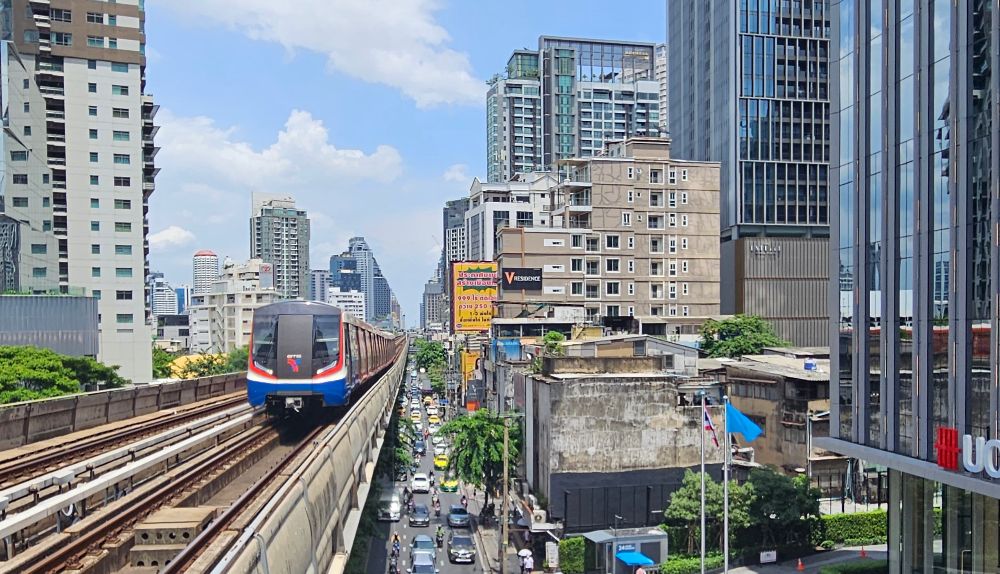
You can download Grab or Bolt, which can be used for long or short trips. We also used InDrive for a trip to Ayutthaya or Kanchanaburi.
When is the best Time Visit Bangkok
Bangkok is worth a few days at any time of year, but each season has its quirks:
- Cool & Dry (Nov–Feb): 20–30°C, lower humidity, best weather — but also peak crowds and prices.
- Hot (Mar–May): Temperatures push past 35°C, plus smoky season haze. Not ideal unless you love malls and aircon.
- Rainy (Jun–Oct): Sudden downpours, high humidity. Still manageable — showers usually clear quickly, hotels are cheaper, and crowds thin out in rainy season.
👉 Don’t overthink it. If Bangkok is part of your trip, just plan around your bigger route. A few wet afternoons won’t ruin it.
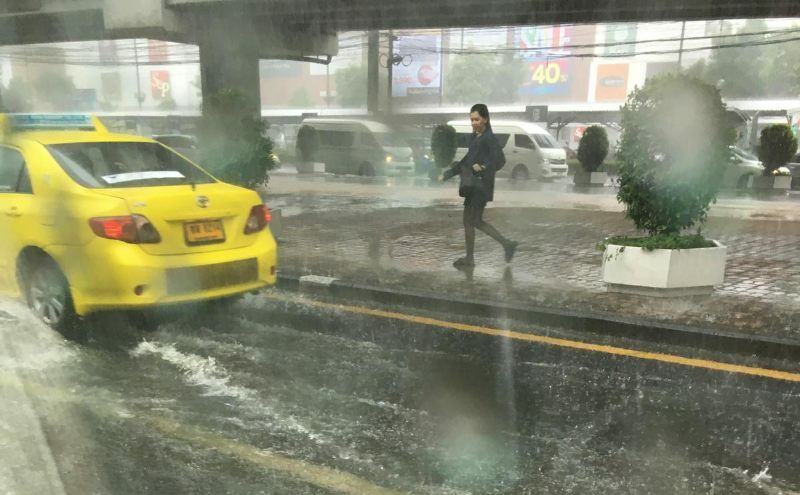
Average temperatures & rainfall for Bangkok
| Month | Avg. Temp (°C) | Avg. Temp (°F) | Avg. Rainfall (mm) |
|---|---|---|---|
| Jan. | 21 – 32 | 70 – 90 | 10 |
| Feb. | 23 – 33 | 73 – 91 | 30 |
| March | 25 – 34 | 77 – 93 | 30 |
| April | 26 – 35 | 79 – 95 | 70 |
| May | 25 – 34 | 77 – 93 | 220 |
| June | 25 – 33 | 77 – 91 | 150 |
| July | 24 – 33 | 75 – 91 | 155 |
| Aug. | 25 – 33 | 77 – 91 | 175 |
| Sept. | 24 – 32 | 75 – 90 | 220 |
| Oct. | 24 – 31 | 75 – 88 | 220 |
| Nov. | 23 – 30 | 73 – 86 | 50 |
| Dec. | 21 – 31 | 70 – 88 | 10 |
Top Things to Do in Bangkok
Yes, you should see the icons — but don’t stop there.
- The Grand Palace: Bangkok’s big-ticket sight. Go early, expect crowds.
- Wat Pho: Home of the Reclining Buddha and traditional Thai massage.
- Wat Arun: Best viewed at sunset from across the river.
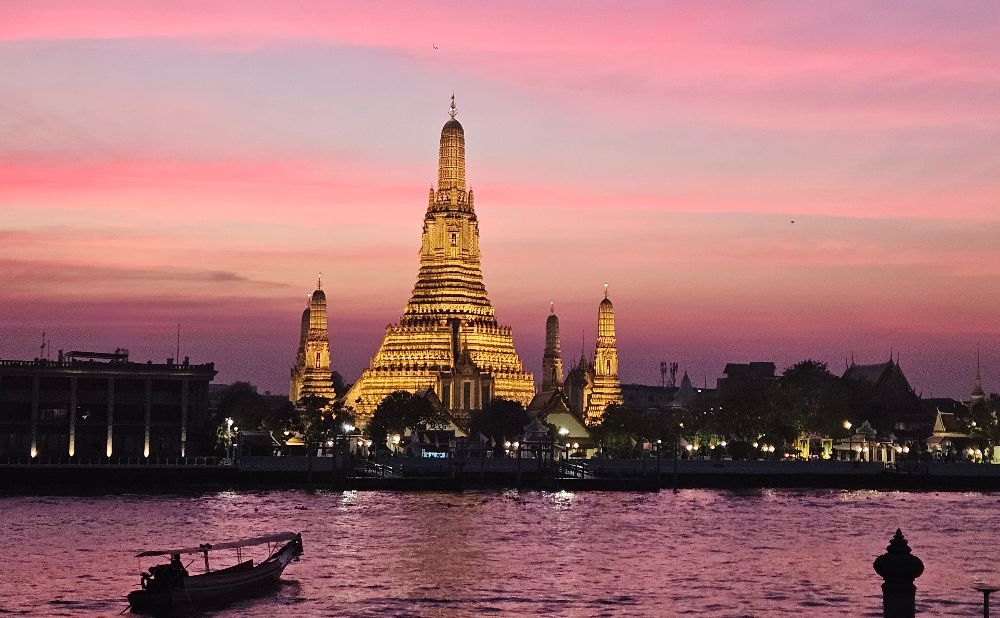
If you’ve got time (or don’t love crowds):
- Bangkokian Museum: A quiet house museum showing middle-class life in the 1930s. Free and overlooked.
- Talad Noi & Song Wat Road: Riverside warehouses turned into street-art canvases, coffee shops and bars
- Museum Siam: A perfect place to learn about Thai culture in a fresh and fun way.
- Or Tor Kor Market: Clean, organised, and packed with fresh produce, snacks, and ready-to-eat meals. It’s open daily, not just weekends.
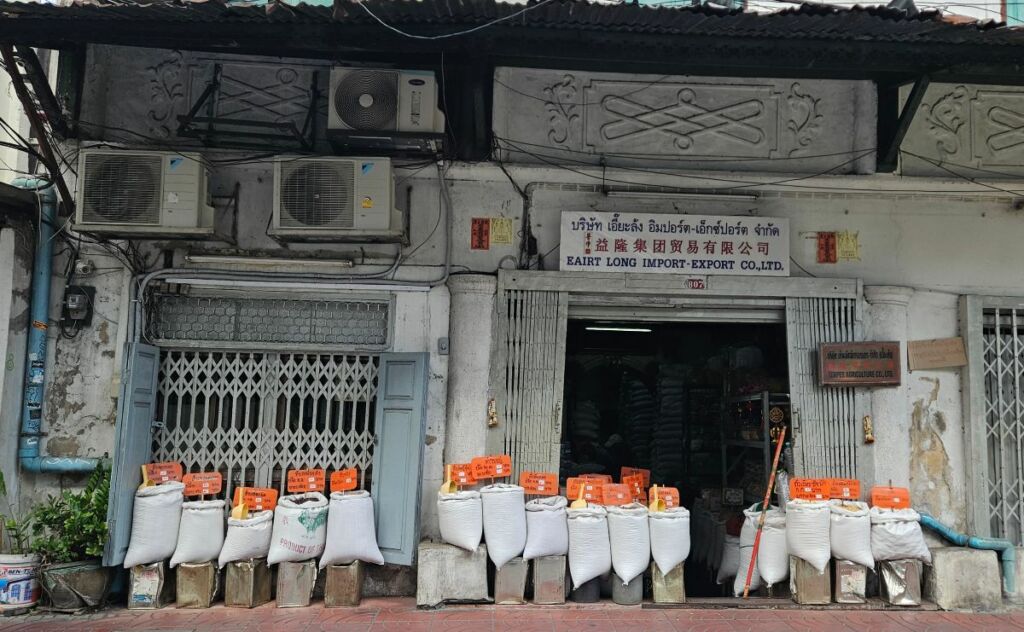
Where to Stay in Bangkok
Bangkok has everything from budget hostels to five-star skyscrapers, but if you prefer smaller, or boutique stays:
- Riva Arun (Riverside): Boutique riverside hotel with some of the best views of Wat Arun. Ideal if you’re planning temple-hopping.
- Quarter Ari (Ari neighbourhood): A modern boutique spot in a leafy area full of cafés and bars, still on the BTS line.
- Hotels inside shopping malls for a shopping trips with regular rest breaks.
For backpackers, Khao San Road is still a rite of passage — but if you like sleep, stay elsewhere.
Tips from my time living in Bangkok
Best known for its street food, party nightlife, there are many layers to this sprawling city and a huge public transport network to help you find uncover them.
- Skip taxis in rush hour — it’s often quicker to walk or jump on a canal boat.
- If the Grand Palace feels overwhelming, visit Wat Suthat instead — just as impressive and almost empty.
- Street food is everywhere, but if you’re nervous, head to Victory Monument or Wang Lang Market— both are packed with locals.
- Bangkok malls aren’t just for shopping — they’re a refuge from the heat, complete with art exhibitions, food courts, and even aquariums.
- Always carry small change — you’ll need it for ferries, temples, and food stalls.
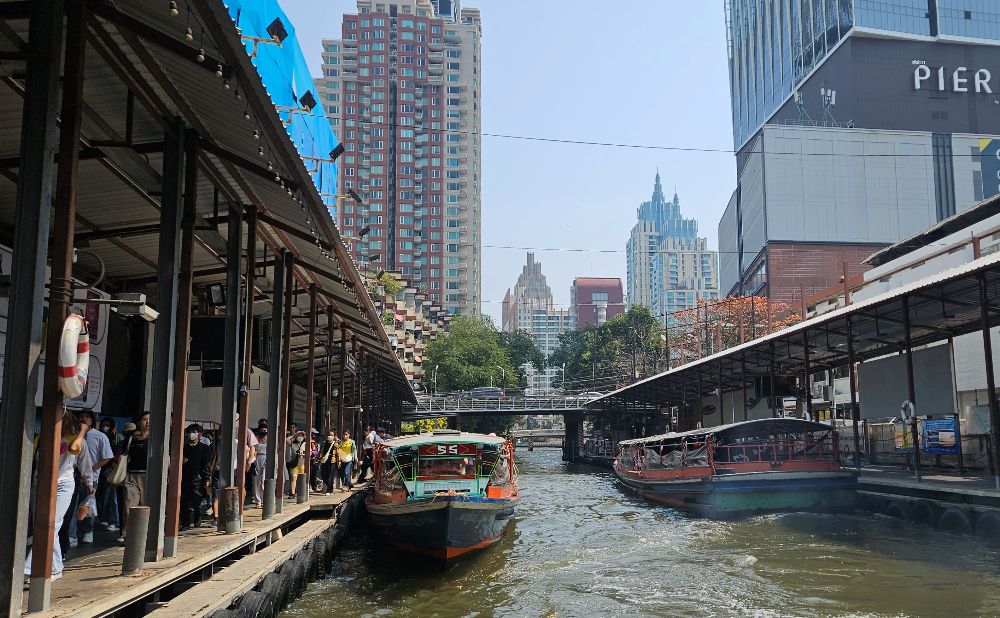
The average time travellers spend in Bangkok is between two and five days.
Bangkok Articles from Thailand Awaits
Continue your holiday travels in Thailand. After Bangkok, the most popular destinations are Chiang Mai, Phuket, and Koh Samui.
Planning a Thai adventure? Join our friendly Facebook community Thailand Awaits: Trip Planning for Beginners. Get expert advice from locals and experienced travellers, ask your questions, and discover how to make the most of your journey through Thailand.
